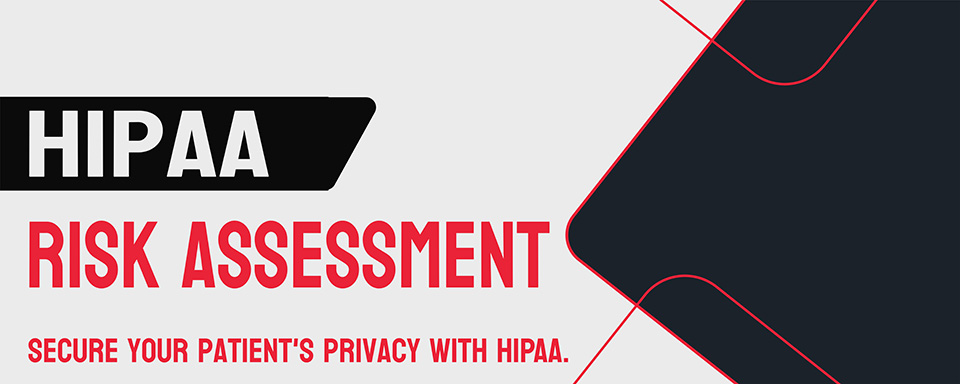
HIPAA Risk Assessment – Why Is It Necessary?
Healthcare breaches are widespread. We hear about them in the news every other week. That’s why it’s mandatory to do business with an organization that is HIPPA compliant.
HIPAA security rules define risk assessment as a thorough and accurate assessment of risks and vulnerabilities to confidentiality, integrity, and availability of electronically protected health information. The HIPPA Act sets several guidelines for adopting accountability rules regarding patient information. As per the guidelines, hospitals and medical services must protect patients' personal information (PI). Failure to comply with HIPPA can lead to hefty fines. In extreme cases, a business may also lose its medical license.
Who Needs HIPPA?
- Covered Entities
These organizations fall into one of the following buckets – health plans, healthcare providers, and healthcare clearinghouses that transmit health information electronically. - Business Associates
An individual or organization receives, creates, maintains, or transmits health information.
What does HIPPA risk assessment Entail?
The organizations that handle Personal Health Information (PHI) must conduct a risk analysis to comply with the security rules of HIPPA and receive their HIPPA compliance. The business entities must include the following components on their risk assessment report:
- Scope of the analysis
This refers to defining any hazard or risk to Personal Health Information. It could be related to the information's security, availability, and integrity. - Data collection
It’s about gathering, storing, maintaining, receiving, and transmitting information related to PHI. If an external provider is being used to host data, the provider must facilitate a document containing a detailed description of how and where the data is stored. - Potential threats & vulnerabilities
It’s among the most challenging steps in the process because it’s similar to searching for a needle in a haystack. Despite that, it’s critical to identify potential sources of trouble related to PHI. - Access the current security measures.
It would be best to list the security measures already in place, such as 2-factor authentication and other types of encryption. - Likelihood of Occurrence of Threat
This refers to predicting the chances of threats. - The potential impact of the threats
It would be best if you predicted the impact of the occurrence of PHI-related incidents. - Determining risk
The level of risk can be determined by averaging the level of threats predicted in the above two items. - Finalize the document
You must have the risk assessment report in a documented format. - Review and update
Risk assessment is not a one-time process. HIPPA regulations are updated periodically. Therefore, you will have to review and revise your risk assessment.
Why Is It Necessary?
These days, using the Internet to communicate with patients is part of the operations. That’s why the number of medical websites and applications has increased. So has the risk of crimes. Vulnerabilities exist regardless of the size of the organization.
Healthcare organizations are the top targets of cybercriminals. Healthcare providers (pharmacies, doctors, nursing homes, clinics, and hospitals) must access their technical, administrative and physical safeguards. This would reveal where the information within the organization could be at the most risk.
All organizations handling PHI need to conduct a risk analysis as the first line of defense and as the first step in implementing the safeguard protocols mentioned in HIPPA's security rule.
The Benefits of HIPAA Risk Assessment
HIPPA risk assessment shouldn’t just be conducted because it’s mandatory, and failure to comply would result in hefty fines. It should be performed because of its benefits to your organization.
It lets you identify the weak spots by allowing you to fix the problem right away or by closely monitoring it. This will make it easier for you to avoid issues when it’s time for a HIPPA Audit. Since risk assessment needs to be performed periodically, there is another advantage whenever your organization goes through infrastructural changes. The entities get the opportunity to review potential vulnerabilities present in the system before the problem arises. This can save you from paying heavy fines.
The risk assessment is lengthy and expensive because it requires a larger workforce and hours. However, its benefits outweigh the drawbacks. Since breaches will be minimized, you will be able to gain your patients' trust.



